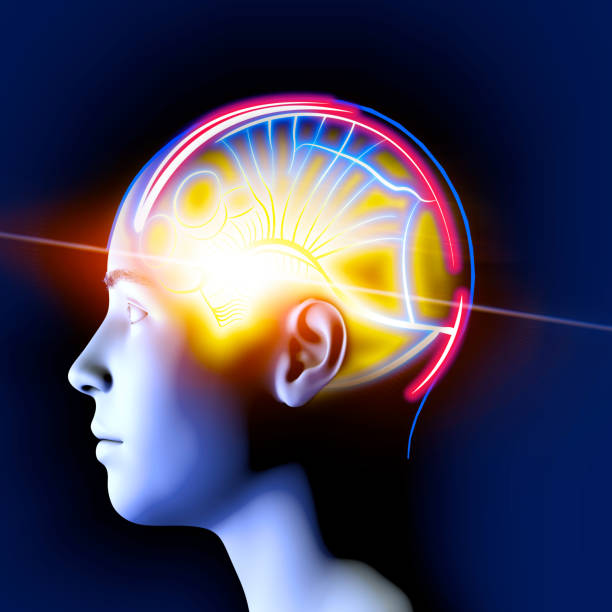Since the dawn of human consciousness, we have dreamed of transcending the boundaries of our physical limitations. Ancient myths speak of sorcerers bending the world to their will, while modern science fiction imagines humans manipulating matter and energy with mere thought. The idea that the mind could directly influence reality is deeply seductive, promising not only unparalleled power but a new understanding of consciousness itself. But beneath the allure lies a profound question: could humans ever truly control reality with their minds, and what would such a capability imply for science, philosophy, and society?
The notion of mental influence over the external world stretches across cultures and centuries. In the mystical traditions of the East, practices like yoga, meditation, and Qi Gong are designed to harmonize mind and body, sometimes promising extraordinary feats such as levitation or healing at a distance. In Western occult traditions, the human will is imagined as a force capable of bending natural laws when properly concentrated. These narratives, while often dismissed as fantasy, hint at a persistent intuition: that consciousness might interact with the physical world in ways we do not yet understand.
Consciousness as a Physical Phenomenon
Modern neuroscience has begun to illuminate the nature of consciousness, suggesting that our thoughts arise from complex networks of neurons firing in the brain. Each thought, sensation, or intention is the product of electrochemical interactions, measurable as brain waves and patterns of neural activity. Yet, understanding consciousness as a physical phenomenon does not necessarily reveal its limits. If thoughts emerge from matter, can they, in turn, exert influence back upon it?
Experimental psychology and cognitive neuroscience have made some tentative steps toward answering this question. Studies of neuroplasticity show that the brain can reshape itself through mental training, meditation, and intentional focus. People can learn to control certain autonomic functions—heart rate, stress responses, and even pain perception—through disciplined mental effort. Brain-computer interfaces (BCIs) extend this principle into the technological realm, allowing humans to control robotic limbs, cursors, or drones through thought alone. While these achievements do not constitute “control of reality” in a mystical sense, they reveal that the mind can indeed exert causal influence over external systems when coupled with technology.
Quantum Mechanics and the Observer Effect
The quantum world introduces even more tantalizing possibilities. At the subatomic level, particles behave differently depending on whether they are observed—a phenomenon known as the observer effect. Experiments demonstrate that the mere act of measurement can alter the outcome of a quantum event, leading some to speculate that consciousness itself might play a role in shaping reality.
It is critical, however, to interpret these findings carefully. The observer effect does not imply that human thoughts alone can dictate the behavior of particles; rather, it reflects the interaction between a measuring device and a quantum system. Yet the philosophical implications have fueled speculation, suggesting that consciousness might not merely reside within matter but could also influence it in subtle, as-yet-unexplained ways. Researchers in quantum cognition, for instance, study how human decision-making mirrors principles found in quantum mechanics, hinting at an intricate entanglement between thought and the probabilistic nature of reality.
The Role of Neurotechnology
If the human mind is to exert meaningful influence over reality, neurotechnology will likely be the bridge between imagination and tangible effect. Brain-computer interfaces are advancing rapidly, enabling communication with machines, manipulation of virtual environments, and even the potential for shared cognitive experiences. In controlled settings, BCIs allow users to perform tasks solely through mental intention, from moving robotic appendages to composing music.
Researchers are also exploring ways to translate neural activity into physical energy. While current efforts are limited to low-power devices such as prosthetic arms or digital cursors, theoretical models suggest that, in principle, the energy emitted by focused thought could be amplified and directed. This remains speculative, as the energy contained in neural firing is minuscule relative to the forces required to move macroscopic objects. Yet even incremental progress in this direction raises profound questions about the boundaries of human agency.
The Placebo Effect and Psychosomatic Influence
Another area where the mind appears to influence reality is the human body itself. The placebo effect, long recognized in medicine, demonstrates that belief and expectation can trigger measurable physiological changes. Patients can experience relief from pain, improvement in immune function, and even recovery from disease due to mental states alone. Psychosomatic medicine confirms that the brain can modulate hormones, neurotransmitters, and other biological processes, illustrating a tangible, if indirect, form of mental influence over reality.
These findings underscore a critical principle: while the mind may not yet move mountains or bend physical objects at will, it can profoundly shape the body, which is itself a part of reality. Conscious intention, combined with focus and belief, has measurable consequences, suggesting that our influence over the world begins first with ourselves.
The Challenges of Energy and Scale
Despite tantalizing examples of mental influence over biology and machines, formidable challenges remain. The energy generated by the human brain is limited, and the forces required to manipulate macroscopic objects are enormous. Neural firing produces on the order of tens of watts—comparable to a dim light bulb. Moving a chair or bending metal with thought alone would require energy orders of magnitude beyond what the brain can produce naturally.
This fundamental limitation forces any discussion of reality control to consider amplification mechanisms. Neurotechnology could serve as such a conduit, converting intention into physical work. Similarly, hypothetical future materials or fields might allow mental energy to interact more directly with the environment. Even if these technologies emerge, the principle of conservation of energy imposes a hard constraint: the mind cannot create energy from nothing, only transform or redirect existing energy.
The Ethics of Mental Influence
Assuming humanity eventually develops the capability to influence reality through thought, profound ethical questions arise. Who would have access to such power? How would societies regulate its use to prevent harm or coercion? The potential for misuse is staggering: individuals capable of altering the physical environment or influencing others’ minds could destabilize social order, challenge legal systems, and redefine moral responsibility.
Philosophers and ethicists caution that mental influence over reality is not merely a technical problem but a moral one. The ability to control external systems through thought would demand unprecedented frameworks of accountability, transparency, and consent. Without careful governance, the very technology that promises liberation could become a tool of domination.
Consciousness, Perception, and Reality
Even if humans never achieve direct physical manipulation of matter, the mind already exerts profound control over subjective reality. Perception shapes experience: the same external environment can be terrifying, beautiful, or mundane depending on mental state. Cognitive biases, attention, and memory construct personalized realities in which every individual navigates the world differently. In this sense, humans already “control reality”—not the objective world, but their lived experience of it.
Philosophers have long debated the nature of reality, from Immanuel Kant’s assertion that we never perceive the “thing-in-itself” to modern neuroscience’s demonstration that perception is a constructive process. Dreams, hallucinations, and virtual reality exemplify how consciousness can bend experiential reality, revealing that control over perception is both real and transformative.
Lessons from Nature
If humans hope to extend mental influence beyond themselves, biology may offer clues. Certain animals exhibit extraordinary sensory and motor control that borders on the seemingly impossible. Electric eels generate significant voltage to stun prey, while some cephalopods manipulate their skin and color with astonishing precision. These examples suggest that biological systems can channel internal energy into external effect in ways humans cannot naturally achieve. Evolution, in this view, has already demonstrated that mind-matter interactions, if harnessed correctly, may be possible.
Studying these systems could inspire bioengineered enhancements, neuroprosthetics, or hybrid technologies that augment human capacity. Such integration of biology and technology might ultimately allow humans to manipulate the environment with greater precision than mere muscular action or conventional tools.
Quantum Consciousness and the Frontier of Possibility
Some theorists propose that consciousness itself may have quantum properties. Theories of quantum mind suggest that microtubules within neurons could exploit quantum phenomena, allowing non-classical computation in the brain. While highly speculative and controversial, these ideas open the possibility that consciousness might interact with the physical world in ways standard neuroscience cannot yet explain.
Experiments in quantum cognition, entanglement, and non-locality offer glimpses of a universe in which information and intention are deeply intertwined. If proven, such principles could form the theoretical foundation for a future in which the mind exerts influence over reality at scales previously considered impossible.
Toward a Science of Thought-Influence
Despite centuries of speculation, humanity remains in the earliest stages of exploring mental influence over reality. Neuroscience, physics, and cognitive science have illuminated the principles of intention, perception, and brain-environment interaction, but no experiment has yet demonstrated the direct manipulation of macroscopic objects through thought alone.
Nevertheless, progress is accelerating. Brain-computer interfaces, neuroprosthetics, meditation research, and quantum technologies are converging to create conditions in which the once-impossible becomes conceivable. The challenge is not merely technical but conceptual: we must expand our understanding of consciousness, energy, and causality before the mind can claim its full potential as an agent in the physical world.
The Human Drive to Transcend
Why does humanity persist in imagining control over reality with thought? Partly, it is the innate drive to transcend limitation. From fire to flight, from telegraphs to satellites, humans have repeatedly converted imagination into reality. Mental mastery represents the next frontier—not merely a technological achievement, but a profound evolution in our relationship with nature, energy, and consciousness.
The pursuit itself carries lessons: patience, creativity, and humility are as vital as power. Even if the ultimate goal remains unreachable, the journey expands understanding of the mind, the universe, and the delicate interplay between them. The dream of controlling reality with thought is, in many ways, a mirror of human ambition itself: audacious, audibly impossible, yet irresistibly compelling.
Conclusion: Between Science and Imagination
Could humans one day control reality with their minds? The answer, at present, is nuanced. While direct physical manipulation of the external world remains beyond current capability, science demonstrates that consciousness can influence biology, technology, and perception in meaningful ways. Quantum phenomena, brain-computer interfaces, and neuroplasticity hint at further possibilities, suggesting that the boundary between thought and action is thinner than previously imagined.
Ultimately, the question challenges not only physics and neuroscience but philosophy and ethics. It asks us to reconsider what reality is, how mind and matter interact, and what responsibilities accompany unprecedented power. Even if the full dream remains speculative, the pursuit is itself transformative: it forces humanity to confront the deepest mysteries of consciousness, to explore the unseen architecture of the universe, and to imagine worlds shaped not only by hands but by the creative power of thought.
In seeking control over reality with our minds, we may discover something more profound: the remarkable capacity of the human mind to shape experience, harness energy, and illuminate the unknown. The frontier of thought is vast, and the journey has only just begun.






